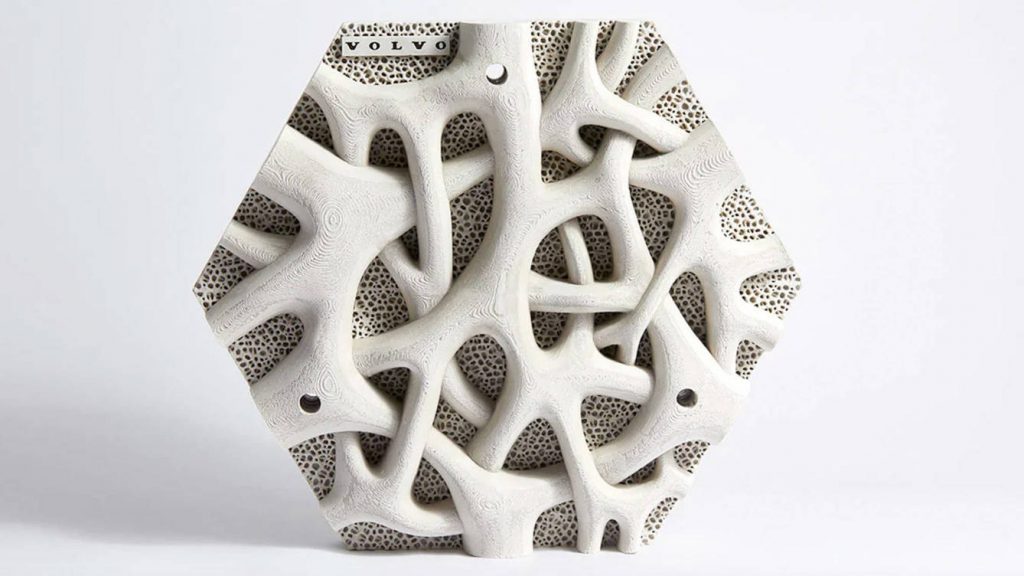Oysters, seaweed, fish, algae and many more organisms have a new home at North Sydney Harbour. At one of the world’s largest Living Seawalls in Bradfield Park, an ocean conservation project brought together Swedish carmaker Volvo, Reef Design Lab, the Sydney Institute of Marine Science (SIMS) and the North Sydney Council to create an ecosystem for some of the most vibrant marine life using 3D printing.
For decades marine life had to look for other places to inhabit because more than 50% of the Sydney Harbour shoreline is armoured with seawalls, a form of coastal defence that protects against waves and tides. In tune with it’s sustainable vocation, the Swedish giant sought an opportunity that seeks to restore the balance of the ecosystem. Using 3D printing technology, experts have developed 50 tiles that have been installed along an existing seawall structure last October and were designed to mimic the root structure of native mangrove trees, becoming the home to thousands of living organisms.
Volvo explained in its website that, “This endeavour aids biodiversity and attracts filter-feeding organisms that actually absorb and filter out pollutants – such as particulate matter and heavy metals – keeping the water clean.”
The loss of important ocean habitat due to an increase in urbanization near the coastlines, along with plastic-polluted water have reminded the Scandinavian company that a different approach to a sustainable cleanup might require more than just riding the planet of plastic garbage. The Living Seawall tiles have small geometries edged into the design to give marine life a place to live, usually seawalls are completely flat constructions without nooks, curves or cavities that organisms can use to colonize. The use of 3D printing technology is key to creating a mold that is cast in concrete and then reinforced with 100% recycled plastic fibers. According to Reef Design Lab, the 3D printed texture is really good for oyster colonization because it replicates the geometry of their shells. The collaborative project will remain in the water for at least the next two decades improving biodiversity and water quality, and will be monitored by specialists, like Melanie Bishop, associate professor of Macquarie University and one of the main researchers of living seawalls in Australia. SIMS explains in its website that “Sydney scientists have been leading the world in the study of the greening of seawalls for more than a decade,” and Bishop is evaluating this new approach for transforming entire seawalls into eco-friendly structures, which can be applied at coastline cities.
The beautifully engineered hexagon shaped tile, or so-called ‘habitat tile’, developed by the Sydney Institute of Marine Sciences (SIMS) and Reef Design Lab, proved very promising after a small-scale trial in Sawmillers Reserve, those 108 tiles along with Volvo’s 50 mangrove-like tiles are ideal for marine life colonization. However, this is not the first and only attempt to improve the quality of oceans and seas, in 2017, University of Sydney scientists used 3D to track changes in coral reefs in an attempt to save the endangered underwater ecosystem. Another advocate of marine sustainability is Australian entrepreneur Darren Lomman, who launched the social enterprise GreenBatch, which is working to build a system that will reprocess plastic bottles into filament, to avoid the PET product ending up in our oceans. Also in line with water conservation philanthropy is Adidas, the company released sneakers created from recycled ocean waste three years ago. In New England, oyster growers use 3D printed structures to help restore the reef ecosystem.
One of the partners of the Living Seawall, Reef Design Lab, is no newcomer to this type of undertaking. Led by designer Alex Goud, the Australian-based 3D printing innovators have been developing 3D printed habitat designs for seawalls since 2014. They first use computer models, then 3D print them and finally mould the designs in marine concrete.
As reported by the World Wildlife Funds’ last Living Planet Report, released in 2018, the Earth is estimated to have lost about half of its shallow water corals in the past 30 years. This somber shadow of life lost is quickly becoming a concern and so many businesses are partnering with creative engineering designers and NGO’s to come up with ideas that will prevent further damage. This type of radical, disruptive and innovative thinking is what might just save the Earth’s water.
Subscribe to Our Email Newsletter
Stay up-to-date on all the latest news from the 3D printing industry and receive information and offers from third party vendors.
You May Also Like
3D Printing Financials: Steakholder Foods Balances Losses and 3D Printed Tech Advances in 2023
A pioneer in the field of 3D printed meat and fish, Steakholder Foods (Nasdaq: STKH) disclosed its 2023 financial results, a year highlighted by technological progress but overshadowed by financial...
3D Printing Financials: Protolabs’ Q1 3D Printing Revenue is Flat, Company Advances in Technology Push
Protolabs (NYSE: PRLB) has kicked off 2024 with a mild boost in revenue, revealing how the Minnesota-based company manages to adapt and thrive even in uncertain market conditions. While the...
Supply Chain Management and the Role of 3D Printing Digital Inventories
As the additive manufacturing (AM) industry grows beyond its humble roots as a rapid prototyping technology, it has been adopted by some of the world’s leading companies to produce not...
3D Printing Financials: Materialise’s Profitability Amid Revenue Dip in Q1 2024
Materialise (Nasdaq: MTLS) has released its first-quarter earnings for 2024, highlighting a challenging quarter with some key advances despite a dip in revenue. While navigating a mixed performance across its...


































